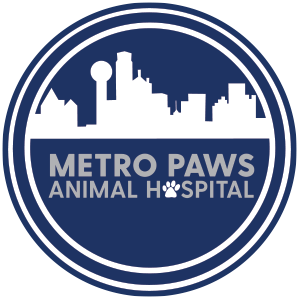Dr. Cassandra Gail Knapp
Diabetes is a condition of high blood sugar levels. When discussing blood sugar, we must also discuss insulin because they literally go hand-in-hand. Insulin is a hormone made within the body (specifically, the pancreas) in response to sugar. When an animal eats sugar (glucose), the body must release insulin to bind it. This binding of insulin and glucose allows sugar molecules to exit the bloodstream and enter the tissues of the body, where they can get to work and be used as energy!
Some pets develop diabetes because they are no longer able to make insulin (the Type I form). In dogs, this is the most common scenario and may be due to destruction of pancreatic tissue (from chronic pancreatitis), an autoimmune disease (attacking insulin-producing cells) or an unknown reason. Other diabetic pets have no problem making insulin but rather, have a problem utilizing it because their bodies develop a resistance to it (the Type II form). This is the more common scenario in cats. Oftentimes, this insulin resistance is due to obesity or the presence of another disease like pancreatitis, cancer, an infection or other hormonal problem.
When insulin isn’t around, glucose just circles round and round the bloodstream. In fact, without insulin, the body experiences a state of starvation because excess glucose remains unused in the bloodstream and overflows into the urine, where it’s eliminated from the body. What we notice is the diabetic pet begins drinking a lot of water and thus, urinating a lot (even having accidents in the house). Diabetics often experience weight loss despite an increased appetite!
To treat diabetes, we administer insulin by injection, usually twice a day. If insufficient amounts are given, diabetes remains uncontrolled. Other conditions that can contribute to uncontrolled diabetes include: incorrect handling, storage or administration of insulin; infections; other diseases such as hormonal problems or too much variation in diet or exercise.
An uncontrolled diabetic pet may develop ketones. Ketones are the result of the body’s abnormal metabolism of fat (since it cannot use carbohydrates like glucose). Ketones are toxic acids. A life-threatening condition called diabetic ketoacidosis (or DKA) may develop.
Uncontrolled diabetes can also result in a decreased immune system and poor wound healing.
If too much insulin is given, the blood sugar may drop too low (hypoglycemia), which can be dangerous or even life-threatening. Our aim is to establish the correct insulin protocol for the pet without significantly affecting the pet’s and owner’s lifestyles. This involves close communication with a veterinarian and may involve periodic trips to the vet’s office.
